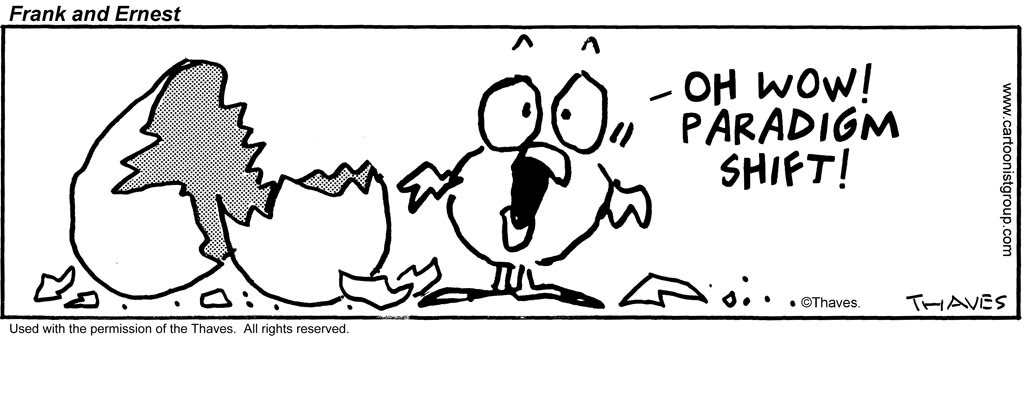God made invisible things visible through His creation.
In a previous post we saw how human beings suppress the truth. We do not want to recognize an external, objective truth. In our rebellion we desire to be the final arbiter of truth. To be that final authority, to determine what it true and false, right and wrong, we suppress the actual truth.
In today’s text the Apostle Paul argues that truth is clearly revealed for all individuals to see.
… since what may be known about God is plain to them, because God has made it plain to them. For since the creation of the world God’s invisible qualities—his eternal power and divine nature—have been clearly seen, being understood from what has been made, so that people are without excuse. Romans 1:19–20
 Paul continues his argument that though God is invisible, he is “able to be known” through the visible things he has made. In fact, “what can be known about God is plain to them.” It is manifest. Evident. Widely known and well known. All these are included in the definition of the word “plain.” Those who deny God’s existence (aka atheists) are “without excuse.”
Paul continues his argument that though God is invisible, he is “able to be known” through the visible things he has made. In fact, “what can be known about God is plain to them.” It is manifest. Evident. Widely known and well known. All these are included in the definition of the word “plain.” Those who deny God’s existence (aka atheists) are “without excuse.”
In other words, from the standpoint of the Bible, there is no such thing as an atheist, if we define atheist as someone who does not believe in God. There are only people who profess atheism, who say, “I don’t believe in God” but are suppressing the truth. To return to an illustration from a previous post, they are intentionally shoving the “jack” (their knowledge of God) into the “box” of their own closed mind.
At any rate, the professing atheist dismisses Paul’s argument out of hand. Such a mindset, sadly, can conceive of nothing beyond the material realm.
A theist, on the other hand, understands that reality is both natural and transcendent. What is more, a relationship exists between these two realms. And quite significantly, the material world reveals the non-material Creator.
Now it must be stated that while God’s existence “can be known” though His creation, that knowledge is dimmed (Now we see but a poor reflection as in a mirror; then we shall see face to face, 1Co 13:12 NIV.) As finite human beings, we may know truly of God’s existence but not exhaustively of His nature.
God has revealed Himself in four ways. Two are called special revelation by theologians: God’s written word and the living Word, Jesus Christ. Two are called general revelation, that which is available to all humankind. General revelation comprises God’s works, divided between Imago Dei (image of God) humanity and the rest of creation.
In this text the Apostle Paul is writing about general revelation.
The first testimony is inside man. The KJV clearly reflects this innate dimension of witness: “that which may be known of God is manifest in them.” The writer uses the preposition ἐν (en), “in, inside, within.”
“The heavens declare the glory of God”
One declaration of God’s existence is the internal witness of our own identity, being made in the image of God. We are like God, and unlike the rest of creation, in that we have been given a mind – attributes of intellect, a heart – moral attributes, and a will – attributes of purpose. All these are attributes of God.

 The second witness is the rest of creation, “being understood from what has been made.” The created order, the laws and ordinances that govern the creation, speak to us of the reality of God. From the beauty and majesty of outer space—galaxies and star systems, to the wonder and complexity of inner space—the “language of creation” found in the genetic code and the structure of the DNA, the creation speaks of God.
The second witness is the rest of creation, “being understood from what has been made.” The created order, the laws and ordinances that govern the creation, speak to us of the reality of God. From the beauty and majesty of outer space—galaxies and star systems, to the wonder and complexity of inner space—the “language of creation” found in the genetic code and the structure of the DNA, the creation speaks of God.
For all time, since the creation of the world, from our first parents to the present human family, God has revealed himself through His creation. The Psalmist captures this:
The heavens declare the glory of God; the skies proclaim the work of his hands. Day after day they pour forth speech; night after night they reveal knowledge. They have no speech, they use no words; no sound is heard from them. Yet their voice goes out into all the earth, their words to the ends of the world. In the heavens God has pitched a tent for the sun. Psalm 19:1-4
Paul uses a figure of speech (called polyptoton if you’re interested) with his repetition of “plain.” Since what may be known about God is plain (phaneros; an adjective meaning “evident, clearly known, clearly seen, visible”) because God has made it plain (The NIV renders this second “plain” as another adjective but it’s actually a verb, phaneroō, meaning “cause to be seen; be disclosed, be displayed; make known, reveal, show to them.”)
The long and the short of the declaration is that God has “disclosed” it so that it is “clearly seen.”
What has been revealed by the created order? The invisible Creator of that order. The universe is real and it manifests a factual order. God’s invisible qualities—His eternal power and divine nature have been “clearly seen” or “perceived.”
The created order reveals two things to all who will see. First, God’s existence, and second, His supremacy and character.
The creation makes visible the invisible. This seems like a conundrum. How can this be? How can the invisible be visible?
(to be continued)
- Darrow Miller






